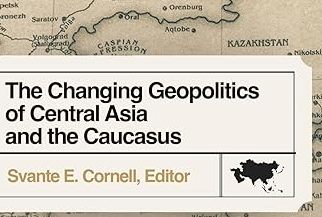Dagestan’s Insurgents Split over Loyalties to Caucasus Emirate and IS
By Emil Souleimanov (04/15/2015 issue of the CACI Analyst)
Recent months have been hectic for Dagestani jihadists. Since mid-2014, this hotbed of the North Caucasian insurgency has witnessed a gradual split, with numerous Dagestan-based jihadist commanders pledging oath (bayat) to the leader of the Islamic State, Abu-Bakr al-Baghdadi. In response, the Caucasus Emirate’s formal leader, Aliaskhab Kebekov, himself a Dagestani, criticized the disloyal commanders for splitting the ranks of the local insurgency. In mid-February, the newly appointed amir of the Dagestani Vilayat, Kamil Saidov, joined Kebekov in his condemnation of those submitting to Baghdadi’s authority. Given the North Caucasian and Dagestani jamaats' weakening capacity, the ongoing developments in Dagestan could break the unity in this last bastion of the regional insurgency.
Georgia’s Economic Crisis and Political Brinkmanship
By Ariela Shapiro (04/15/2015 issue of the CACI Analyst)
Since November 2014, Georgia’s national currency, the lari (GEL), has devalued an estimated 28 percent against the dollar, measuring at 2.23 to 1 dollar as of April 10, 2015. This currency crisis has severely impacted local Georgian consumers and the operating capacity of Georgian businesses while undermining foreign investor confidence. The current crisis was externally catalyzed by falling oil prices, the Russian ruble’s harsh inflation and regional political and economic destabilization due to the Ukrainian conflict. Domestically, the economic crisis has been exacerbated by the Georgian government’s ambiguous, often ad hoc, economic strategy. Amidst the failing economy and falling domestic confidence, the Georgian political landscape remains deeply fractured and no party has demonstrated political willingness to create a multi-partisan solution to the economic crisis.
The China-Armenia Declaration and Beijing’s Prospects in the South Caucasus
By Eduard Abrahamyan (04/15/2015 issue of the CACI Analyst)
The visit of Armenia’s President Serzh Sargsyan to the People’s Republic of China on March 24, following his moderate criticism of Russia’s arms deliveries to Azerbaijan, emanated in the signature of a bilateral comprehensive declaration signed between Armenia and China. One of the document’s significant pillars is Armenia’s enrollment in China’s “Silk Road Economic Belt.” Another is an accord to cooperate in the defense and military sphere, emphasizing mutual “military support.” The declaration combined over ten special agreements, involving various ministries of both states, and a preferential loan for adapting and modernizing custom services. China’s agreements with Armenia, coupled with its interest vis-à-vis Azerbaijan and Georgia, heralds China’s economic and political penetration in the South Caucasus.
Iran, A Nuclear Treaty, and Its Neighbors
By Stephen Blank (04/01/2015 issue of the CACI Analyst)
The 5+1 negotiations with Iran over its nuclear program reached a framework agreement in April 2014. In the U.S., there has been enormous controversy over the alleged outlines of a draft treaty that Iran must either accept or reject by June 2015. If Iran rejects the terms offered in the eventual treaty, the negotiation process is likely to break down. The controversy in the U.S. relates to Iran’s threats against Israel and to a lesser degree its neighbors in the Persian Gulf. But throughout this crisis, much less attention has been devoted to Iran’s relationships with its South Caucasian and Central Asian neighbors.



 Silk Road Paper S. Frederick Starr,
Silk Road Paper S. Frederick Starr,  Book Svante E. Cornell, ed., "
Book Svante E. Cornell, ed., "